Haikyō Onsen – Japanese “urbex” amid the abandoned beauty of 1980s resorts
Extinct worlds
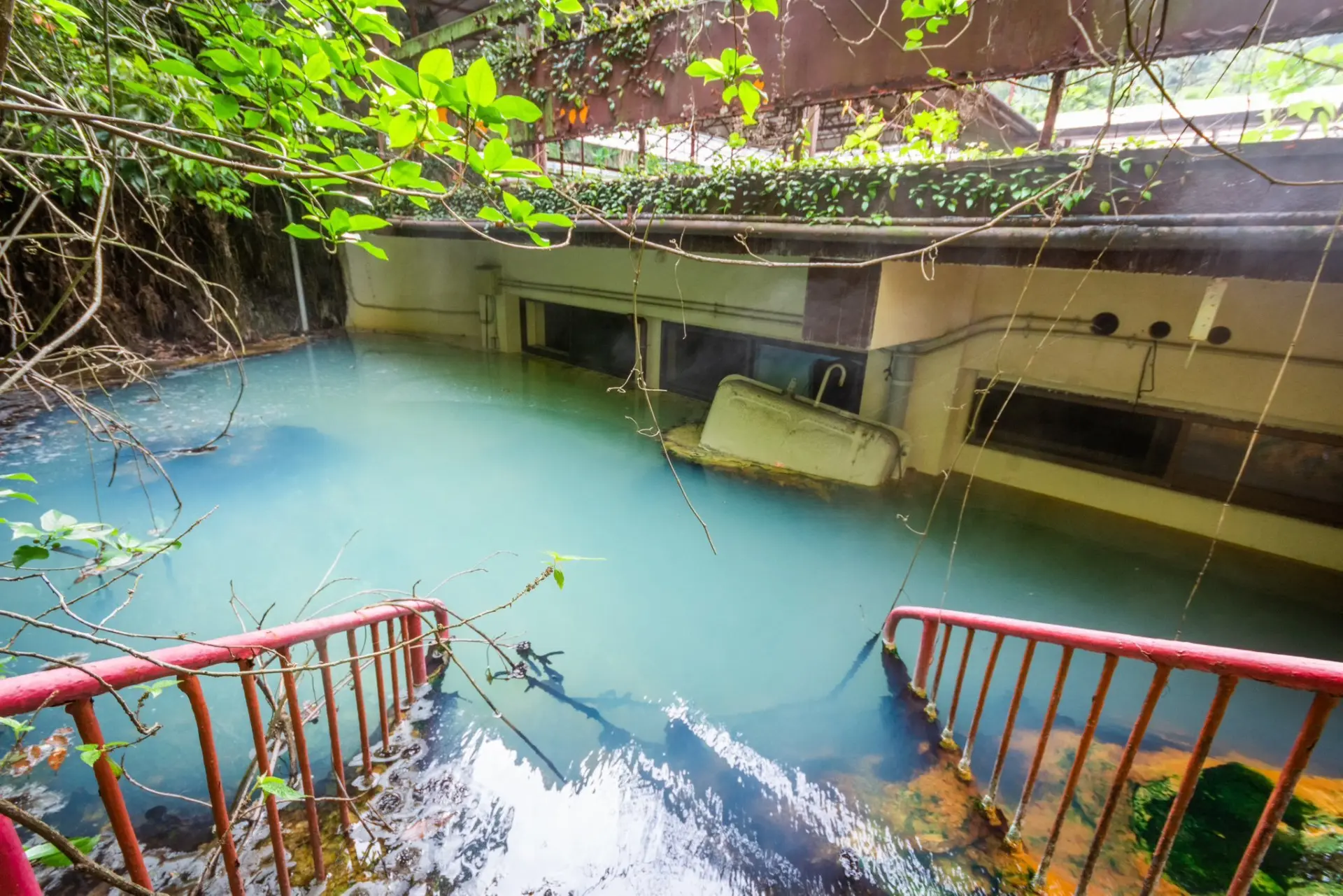
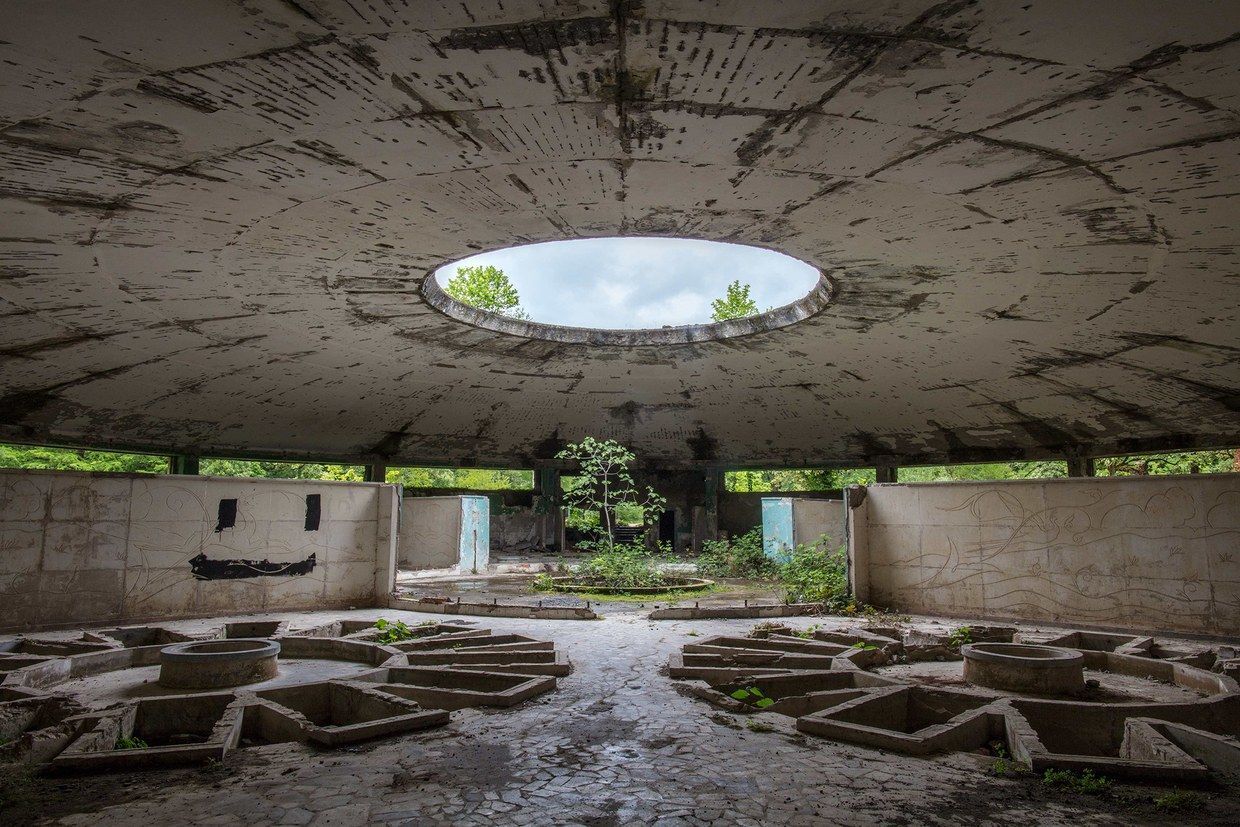
Haikyō is the Japanese form of exploring abandoned places, fundamentally different from Western urbex. It’s not about thrills, illegal access, or collecting photos, but something subtler—presence. Haikyō is like a quiet conversation with a ruin—one that does not speak, but still teaches something. It is the practice of attentively entering the landscape of abandonment, where every rusting pipe and every crumbling wall becomes part of a greater poem about transience. For many Japanese, it is a form of nonverbal homage—not to people, but to the places themselves, their ambiguous soul, accumulated silence, and slow death, which seems more dignified than mere collapse. Haikyō is not the curiosity of a thrill-seeking tourist, but the presence of a pilgrim—attentive, quiet, humble before impermanence. I invite you today on just such a journey—to get to know several of these places more closely, their current state and history, and to ask ourselves—what really happened?
What does Haikyō Onsen mean?
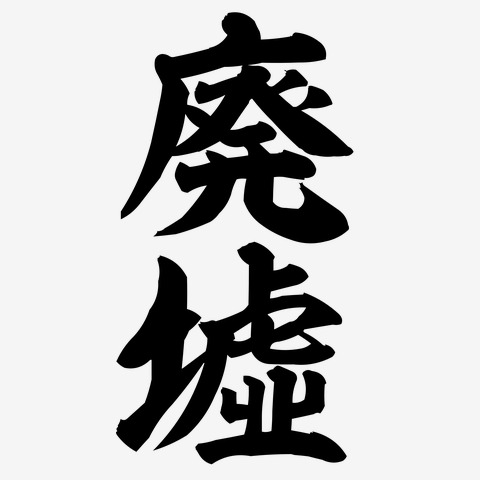
The first character, 廃, means to abandon, to shut down, to ruin. It is a character full of resignation. Its left side is the radical 广 (madare), indicating a building or a space beneath a roof, and the right—発 (in its older form)—suggests an act of release, rejection, or conclusion. Together, they convey the meaning of a "building no longer needed." Today, 廃 appears in words such as 廃業 (haigyō, the closure of a business) or 廃止 (haishi, the abolishment of a law or institution).
The second character, 墟, is much rarer and more poetic. It means ruin, the site of a former building, a wasteland—something that once existed and now no longer does. It consists of the radical 土 (tsuchi, earth), referring to ground or soil, and the component 虛 (kyo, emptiness). This character alone already speaks volumes—it is earth that has become empty. In ancient literary texts and classical calligraphy, this character appears in contexts of melancholy, impermanence, and the ruins of civilizations. It can also be found in classical poetry, where "墟" referred to former battlefields or forgotten cities now overgrown with grass.
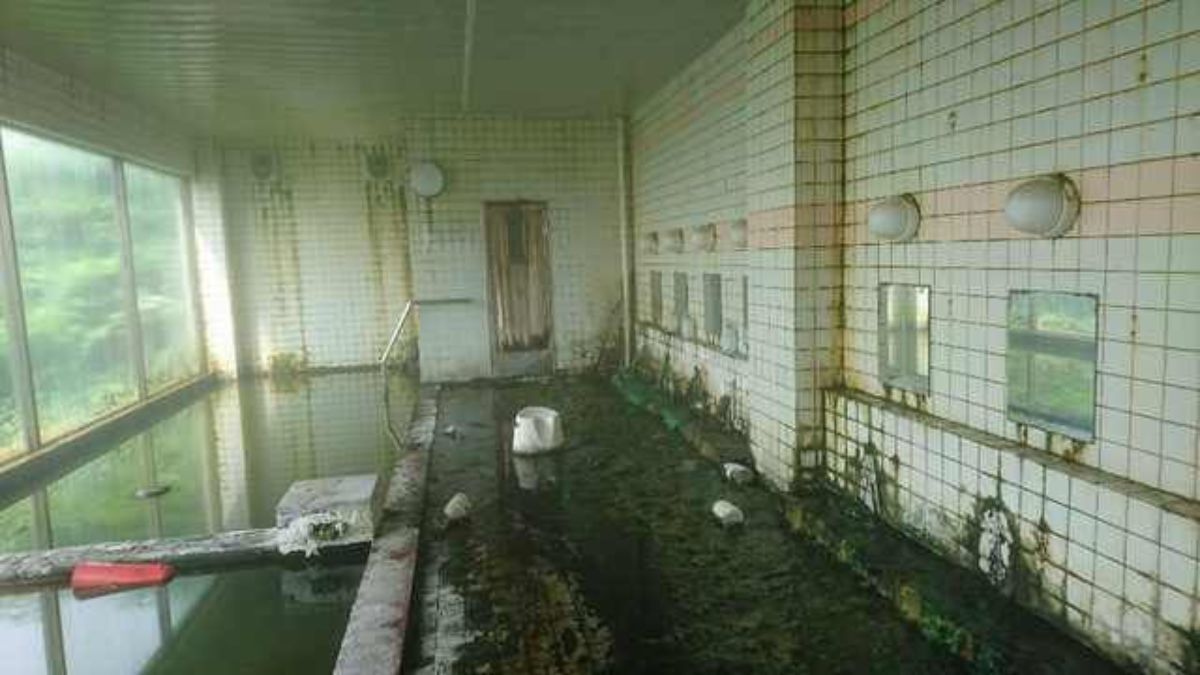
Where Western urbex can be a form of rebellion or conquest, haikyō becomes a silent dialogue with the past. Instead of adrenaline—silence; instead of trophies—a fleeting connection with a vanished world.
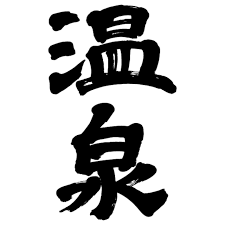
Thus, haikyō onsen (廃墟温泉) refers to abandoned Japanese hot spring resorts—former ryokan, hotels, and bathhouses that once teemed with life, now left in ruins, quietly consumed by nature. The term evokes spaces where the aesthetics of transience meet the echoes of past baths, conversations, and fogged windows. These are not merely physical locations but symbols of Japanese melancholy, sensitivity to time, and the beauty hidden in decay.
The scale of the phenomenon and statistics
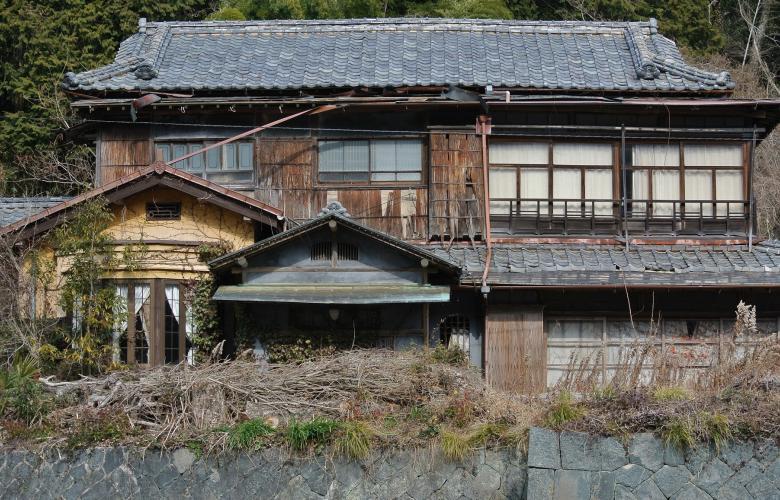
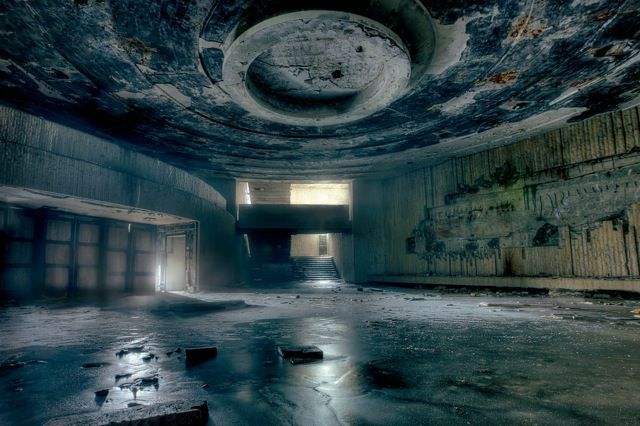
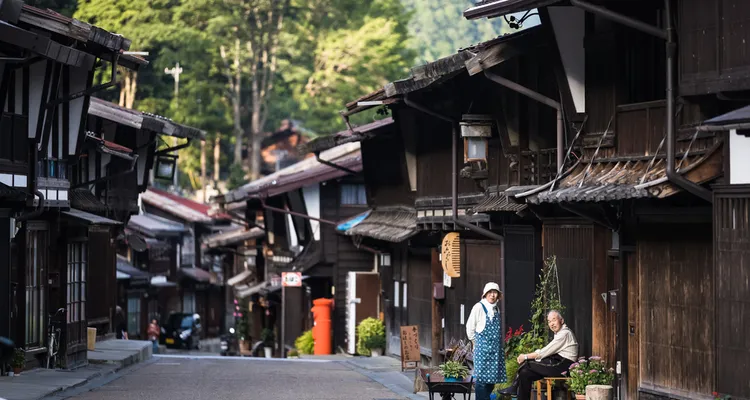
According to geological data, Japan has over 27,000 registered hot springs, of which only about 3,000 operate as active bathing facilities. The rest are unused, shut down, or too inaccessible—often linked to former onsen hotels. It is thus reasonable to assume that thousands of haikyō onsen are scattered across the country—invisible in official records, yet present in the landscape, in memory, and in the quiet enthusiasm of explorers.
Haikyō onsen are especially numerous in mountainous prefectures, on islands such as Sado, in Hokkaidō, or in former holiday destinations like Kinugawa. Amid bamboo forests, behind rusted gates and cracked walls, they wait for those who can see beauty in decay. And although their time as places of hospitality has passed, their number and presence continue to grow—as if abandonment had become a new form of existence.
Why they were abandoned?
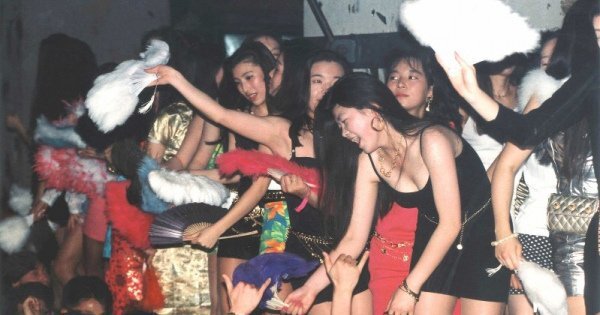
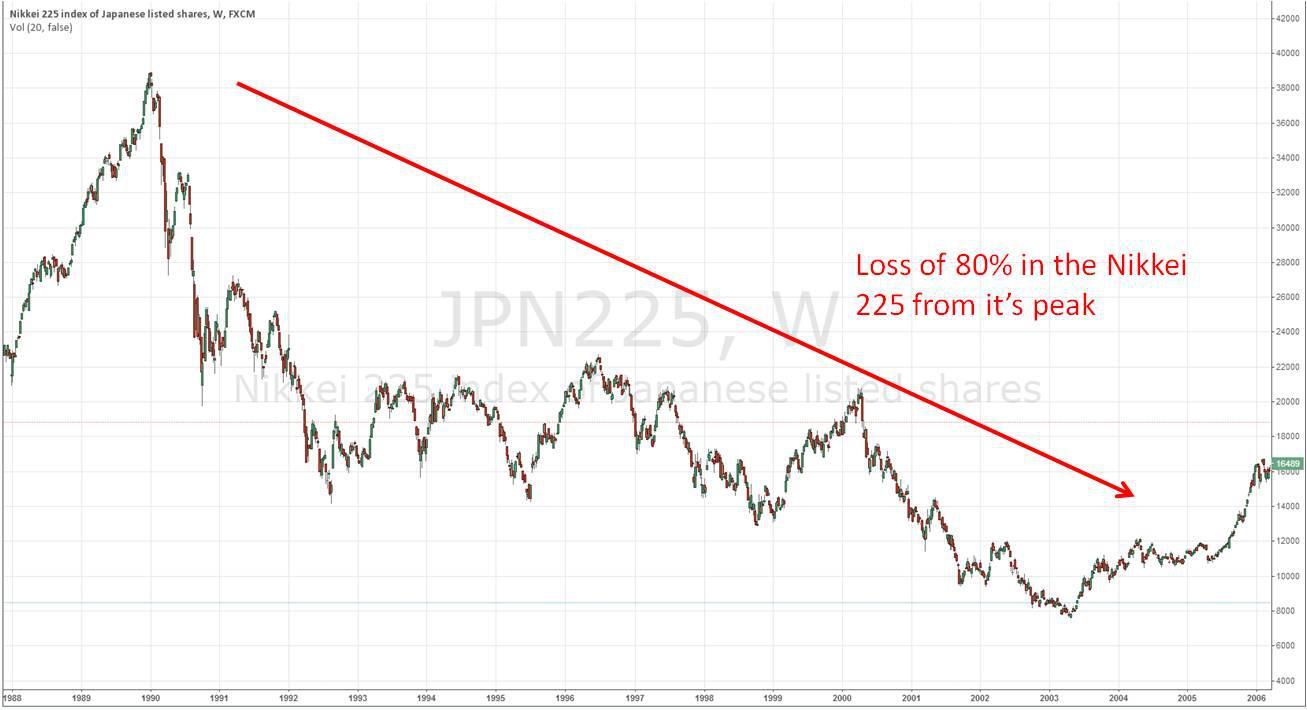

Then came the problem of market oversaturation. In many towns, such as Beppu, Noboribetsu, or Atami, there were more hotels than guests. Everyone tried to stand out through luxury, size, or additional attractions—karaoke, bars, game rooms, performances by geisha and masseuses. Entire resorts were built that resembled miniature cities. But even if one hotel made a profit, ten others incurred losses. When the system collapsed, there was no one left to buy or run the business.
And so the companies vanished. But buildings do not disappear from the landscape so easily. Japan—despite its obsessive cleanliness and modernity in its metropolises—has an astonishing number of abandoned, slowly decaying places. Onsen hotels, often multi-storey structures made up of dozens or hundreds of rooms, restaurants, baths, and corridors, are simply too expensive to demolish. And since they generate no income, no one wants to invest in their renovation. To accountants, they are merely a dead entry—an item that exists only in a registry. To the outside world—they are quiet shadows of the past, rusted relics of an era that believed in endless growth.
What is happening to them today?
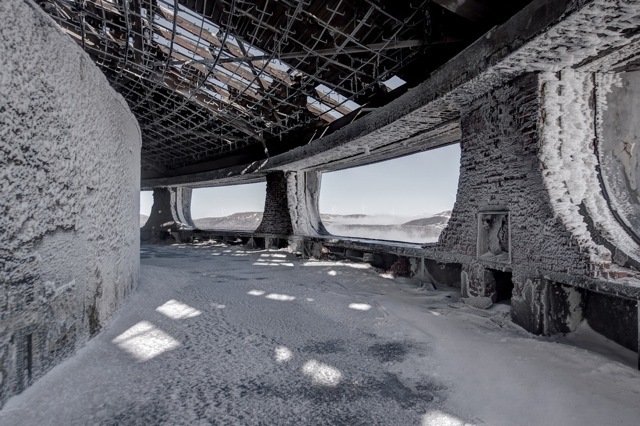
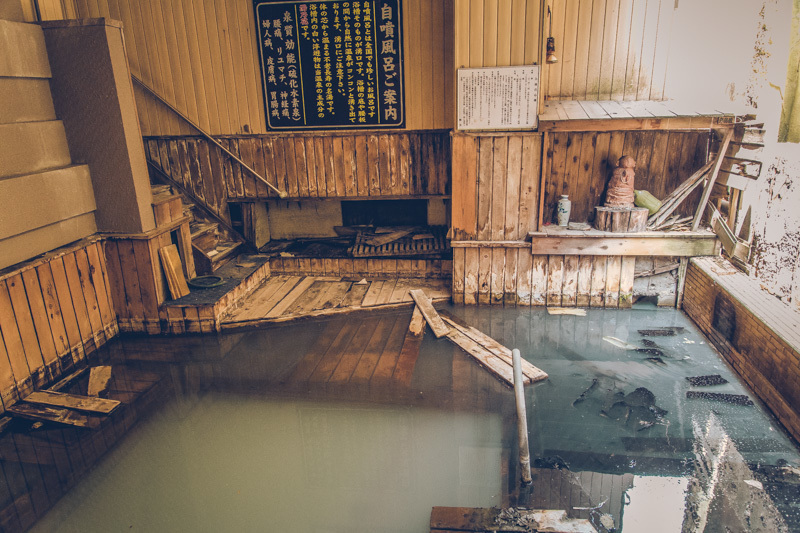
For some, they are now places of pilgrimage. Photographers, explorers, haikyōists (I know, it’s a bit of a linguistic monstrosity, but the distinction from “urbexers” is important—in Japanese, one says haikyōka 廃墟家), those who document ruins, find in them not only a subject but a space of spiritual experience. Blogs, books, and essays arise whose axis is defined by such places—empty pools, abandoned hotel receptions, silent rooms. Sometimes ruins are given a second life: they become artistic backdrops, photo shoot settings, illegal shelters, or venues for “underground” events.
But in most cases—they simply exist. They stand in mountain valleys, by paths no one walks anymore. Sometimes, only the echo of footsteps, the click of a smartphone taking a photo, the creak of a sliding shōji door reminds us that someone still seeks them from time to time.
Examples of real places
Beneath every layer of dust lies a story. Every shattered shōji screen, every damp guest card, every bottle of sake abandoned in the shadows—all of it forms a silent archive of a bygone era. The ruins of onsen are not only traces of economic collapse, but fragile time capsules in which the dreams, fatigue, and joy of guests who will never return have been sealed.
Takinoyu Onsen – 滝の湯温泉 (Waterfall Onsen)
Established: ca. 1955 | Closed: 1999
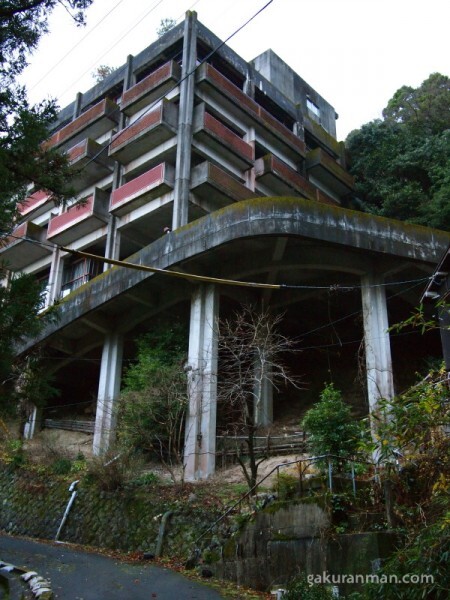
In the late 1990s, local financial institutions collapsed, and an earthquake in 1998 damaged the building’s foundations. The cost of renovation exceeded the owners’ capabilities. Takinoyu was closed without warning. Today, the bathing halls are overgrown with moss, cracked futon lie scattered on the floors, and in one room a neatly folded kimono still rests—a silent witness to a life suddenly interrupted.*
*In one photo—often shared in accounts of this place across the Japanese internet—a folded woman’s kimono lies on a futon, as if someone had just taken it off before a bath. This image has become symbolic of the abrupt abandonment of the ryokan—items left in order, with no signs of looting or chaotic evacuation.
Hōheikyō Hotel – 豊平峡ホテル
Established: 1970s | Closed: 2001
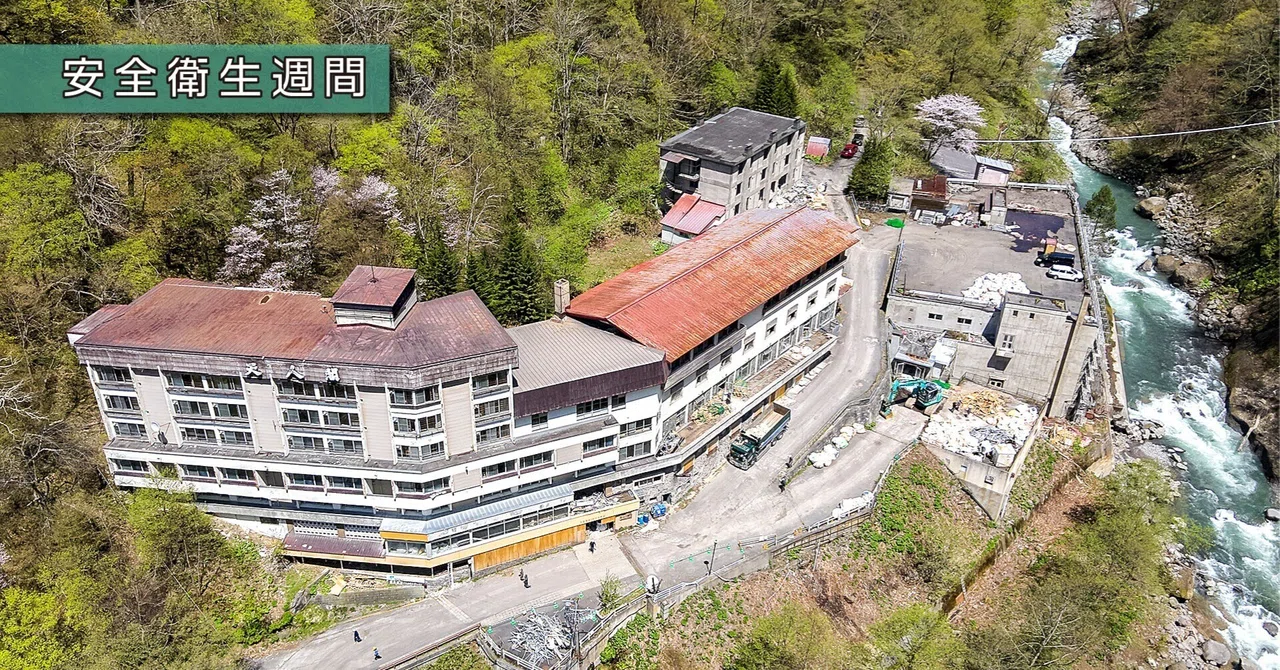
Its decline came gradually—after the opening of new express routes to better-known destinations like Noboribetsu or the reemerging Furano, interest in Hōheikyō waned. Growing competition, high maintenance costs, and a lack of investment sealed its fate at the dawn of the 21st century. Today, the building still stands—silent, yet strangely alive: the crystal chandelier still hangs in the lobby, the wooden floor creaks underfoot, and a row of shoe lockers greets explorers just as it once welcomed arriving guests. Rainwater still collects in the rusted pool, and fallen leaves pile up on the glass terrace overlooking the pass—as if time stopped precisely the moment the last guest checked out without a word.
Kannon Onsen Hotel – 観音温泉ホテル
Established: 1980s | Closed: 2005
Hidden among the hills of the Izu Peninsula, near the hot spring town of Shimoda, Kannon Onsen Hotel took its name from a nearby Buddhist temple with a monumental statue of the goddess of mercy—Kannon. The hotel was built in the 1980s, during Japan’s economic bubble, as a modern facility combining the comfort of a ryokan with the functionality of a mid-range hotel. It attracted guests not only with the serenity of the surrounding forests and mild climate, but also with water from its own spring—exceptionally clear and rich in minerals. Guests could bathe in large indoor and outdoor pools with views of the forest, and stroll through a meticulously maintained Japanese-style garden where azaleas and camellias bloomed in spring.
The hotel's downfall came suddenly—on a Monday, no guests arrived, and the reception never reopened. From one day to the next, operations ceased, and the building was abandoned. To this day, an unfinished report and a calendar opened to September 2005 lie on the office desk near the entrance. The corridors carry the scent of moisture and wood. The most haunting symbol is a solitary capsule filled with children’s toys, standing in the hallway leading to the game room. Partially flooded by rain, the onsen pools reflect the sky and trees, transforming the hotel into a temple of ruins, with silence as its only remaining priestess.
Kinugawa Kan – 鬼怒川館 / Kappa Onsen – 河童温泉
Established: ca. 1970 | Closed: 1999
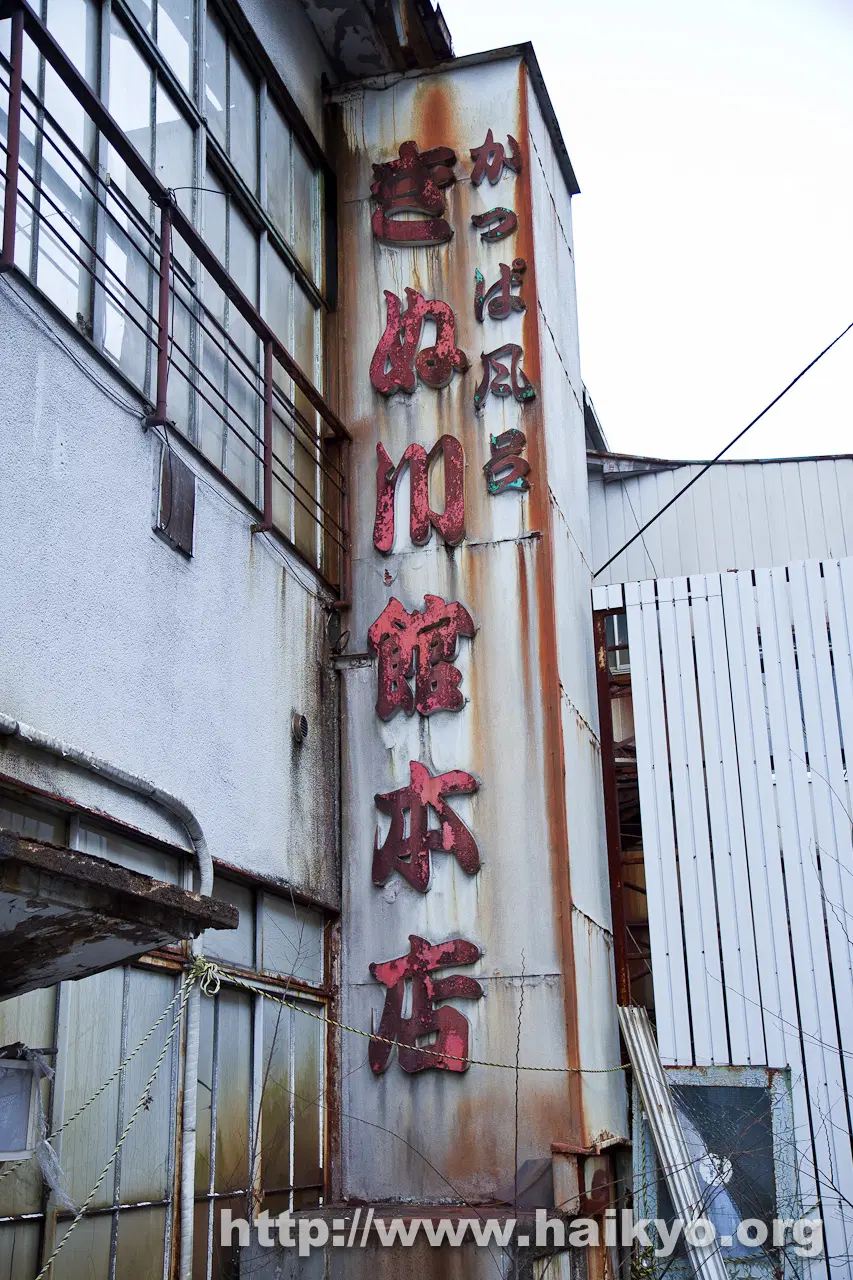
But the boom of the 1980s did not last forever. When Japan’s speculative bubble burst in the 1990s and the regional bank that financed hotel investments in Kinugawa collapsed—everything began to crumble. In 1999, Kinugawa Kan closed its doors and never reopened. To this day, it remains untouched—you can still find a guest book with final entries from June 1999, calendars frozen on the same month, posters advertising karaoke nights, and handwritten orders that will never be fulfilled. Moss now covers the tiles of the former pools, abandoned hotel keys lie on the reception counter, and the plastic kappa by the entrance bows its head—as if ashamed of what the place has become.
Hachijō Onsen Hotel – 八丈温泉ホテル
Established: 1959 | Closed: 2006
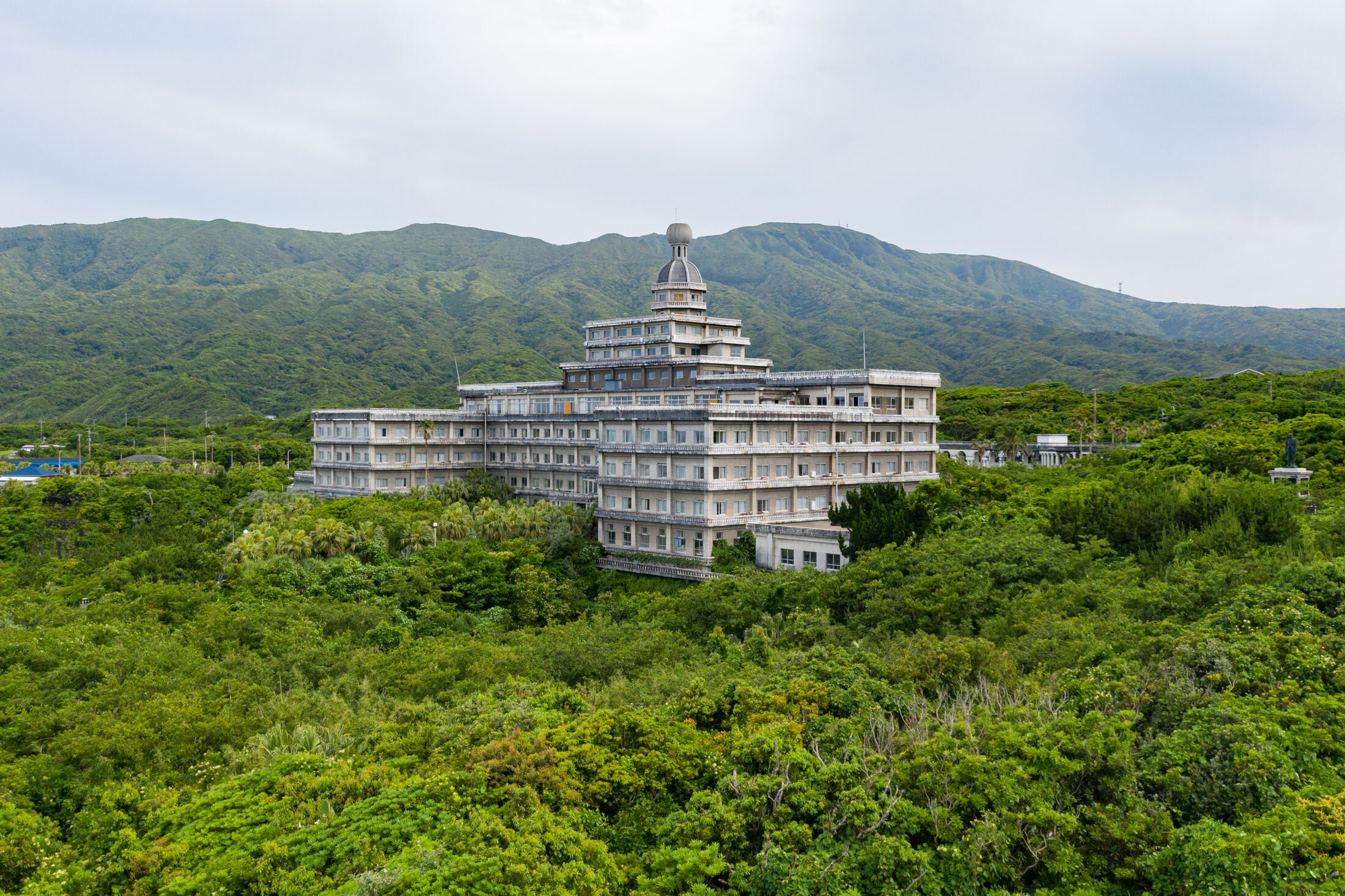
However, the hotel’s economy was fragile. With the democratization of overseas travel and increasing accessibility of attractions outside Japan, tourists began to drift away, and Hachijō-jima lost its appeal. An additional blow came with the economic crisis at the end of the 20th century—the hotel, later rebranded as the “Hachijō Oriental Resort,” permanently closed its doors in 2006.
Today, the building stands cracked and overgrown with wild tropical vegetation: palms and marsh grasses have overtaken the former parking lot, and the concrete walls are blanketed in moss. The entrance to the outdoor baths now resembles a theatrical remnant of former pleasures—entirely abandoned, as if time and nature together were conjuring the mood of forsakenness. Despite the passing years, the structure still impresses with its scale and design—it is one of the largest abandoned hotels in Japan, sometimes aptly called a “temple of forgetting.”
Legal Aspects


“Take nothing but photos, leave nothing but footprints.”
It is a principle that not only expresses respect for the site but emphasizes that haikyō is not an adventure but an experience—a meditation among ruins. Every displaced object, every signature on a wall, every piece of trash disturbs the delicate balance of silence and memory. Many locations are therefore not disclosed publicly—not only out of fear of legal consequences but out of concern for vandalism, theft, or even accidental fires that could destroy what has endured for decades in forgetfulness, yet with dignity.
Haikyō…


Haikyō is not an escape into the past. It is an attempt to understand the present through what has been left behind. Every moss-covered onsen, every empty chair in a dining hall, every folded kimono in a guestroom—they are letters that were never sent, but that someone may still read. If only they enter quietly, with reverence. And leave just as they came—leaving behind only footprints.
>> SEE ALSO SIMILAR ARTICLES:
Inunaki Tunnel: Brutal Murder, the Howling Dog, Buried Workers, and Horrific Experiments...
Sugisawa – A Nighttime Massacre Erased a Village from Japan’s Map
Kisaragi – The Mysterious Japanese Subway Station Beyond All Maps
The Meowing Kingdom of Tashirojima - An Island Ruled by Cats
"Strong Japanese Women"
see book by the author
of the page
未開 ソビエライ
An enthusiast of Asian culture with a deep appreciation for the diverse philosophies of the world. By education, a psychologist and philologist specializing in Korean studies. At heart, a programmer (primarily for Android) and a passionate technology enthusiast, as well as a practitioner of Zen and mono no aware. In moments of tranquility, adheres to a disciplined lifestyle, firmly believing that perseverance, continuous personal growth, and dedication to one's passions are the wisest paths in life. Author of the book "Strong Women of Japan" (>>see more)
Personal motto:
"The most powerful force in the universe is compound interest." - Albert Einstein (probably)
Mike Soray
(aka Michał Sobieraj)
未開 ソビエライ
An enthusiast of Asian culture with a deep appreciation for the diverse philosophies of the world. By education, a psychologist and philologist specializing in Korean studies. At heart, a programmer (primarily for Android) and a passionate technology enthusiast, as well as a practitioner of Zen and mono no aware. In moments of tranquility, adheres to a disciplined lifestyle, firmly believing that perseverance, continuous personal growth, and dedication to one's passions are the wisest paths in life. Author of the book "Strong Women of Japan" (>>see more)
Personal motto:
"The most powerful force in the universe is compound interest." - Albert Einstein (probably)
Mike Soray
(aka Michał Sobieraj)
Write us...
Ciechanów, Polska
dr.imyon@gmail.com
___________________
inari.smart
Would you like to share your thoughts or feedback about our website or app? Leave us a message, and we’ll get back to you quickly. We value your perspective!



















